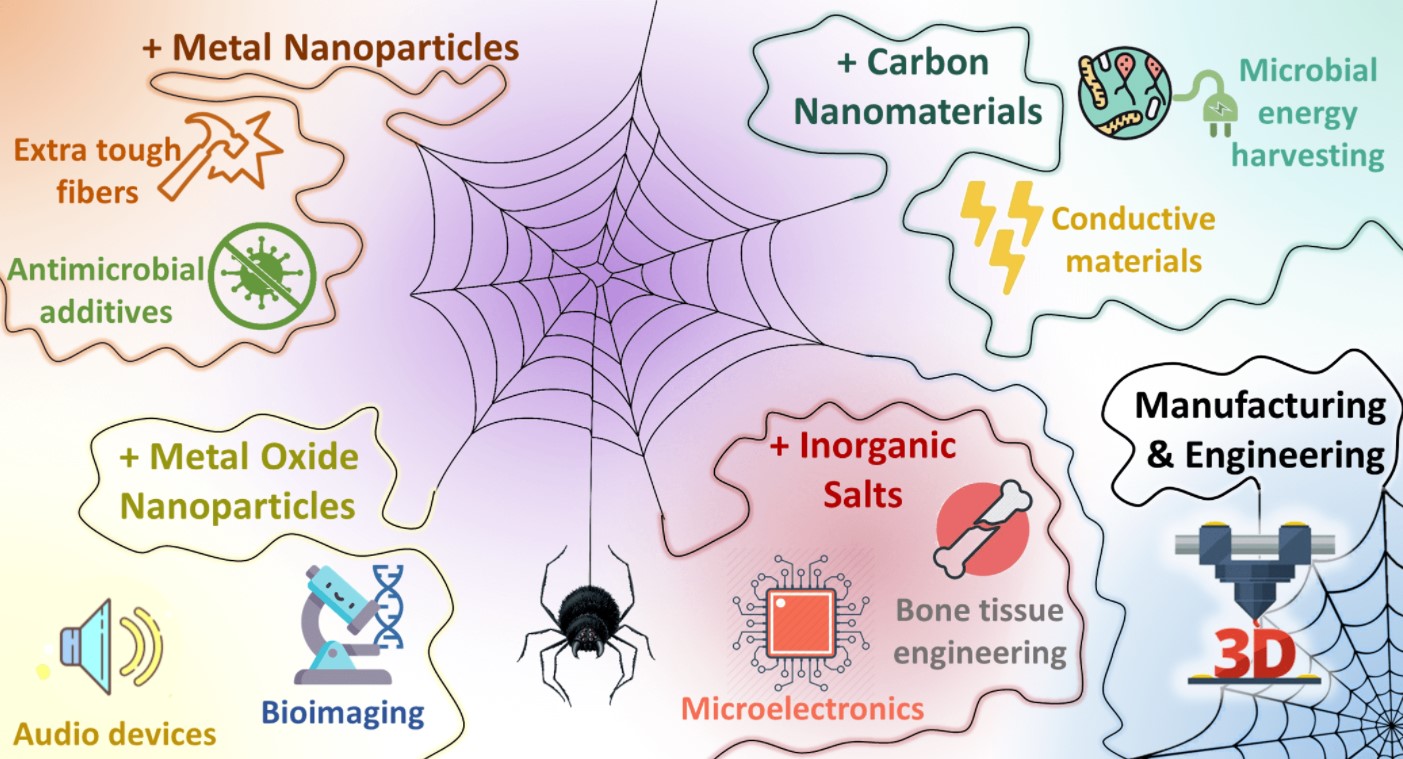Авторы: , ,, Gulaim Seisenbaeva , Vadim Kessler , Кривошапкин П.В., Кривошапкина Е.Ф.

Abstract
High-performance functional biomaterials are becoming increasingly requested. Numerous natural and artificial polymers have already demonstrated their ability to serve as a basis for bio-composites. Spider silk offers a unique combination of desirable aspects such as biocompatibility, extraordinary mechanical properties, and tunable biodegradability, which are superior to those of most natural and engineered materials. Modifying spider silk with various inorganic nanomaterials with specific properties has led to the development of hybrid materials with improved functionality. The purpose of using these inorganic nanomaterials is primarily due to their chemical nature, enhanced by large surface areas and quantum size phenomena. Functional properties of nanoparticles can be implemented to macro-scale components to produce silk-based hybrid materials, while spider silk fibers can serve as a matrix to combine the benefits of the functional components. Therefore, it is not surprising that hybrid materials based on spider silk and inorganic nanomaterials are considered extremely promising for potentially attractive applications in various fields, from optics and photonics to tissue regeneration. This review summarizes and discusses evidence of the use of various kinds of inorganic compounds in spider silk modification intended for a multitude of applications. It also provides an insight into approaches for obtaining hybrid silk-based materials via 3D printing.
Keywords: spider silk; hybrids; functional materials; inorganic nanoparticles; carbon nanotubes; quantum dots; gold nanoparticles; silver nanoparticles; 3D printing
https://doi.org/10.3390/nano10091853
Read Full: https://www.mdpi.com/2079-4991/10/9/1853